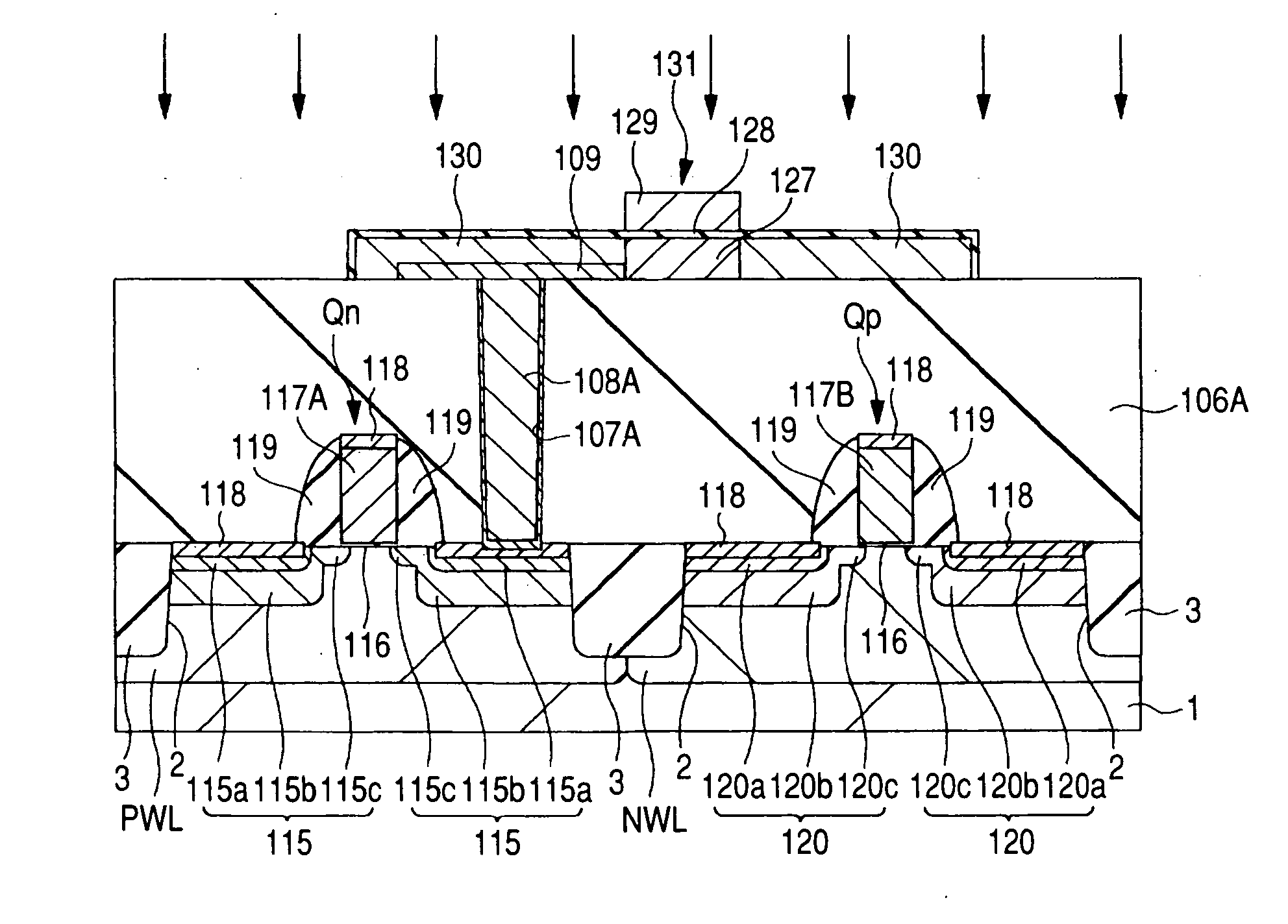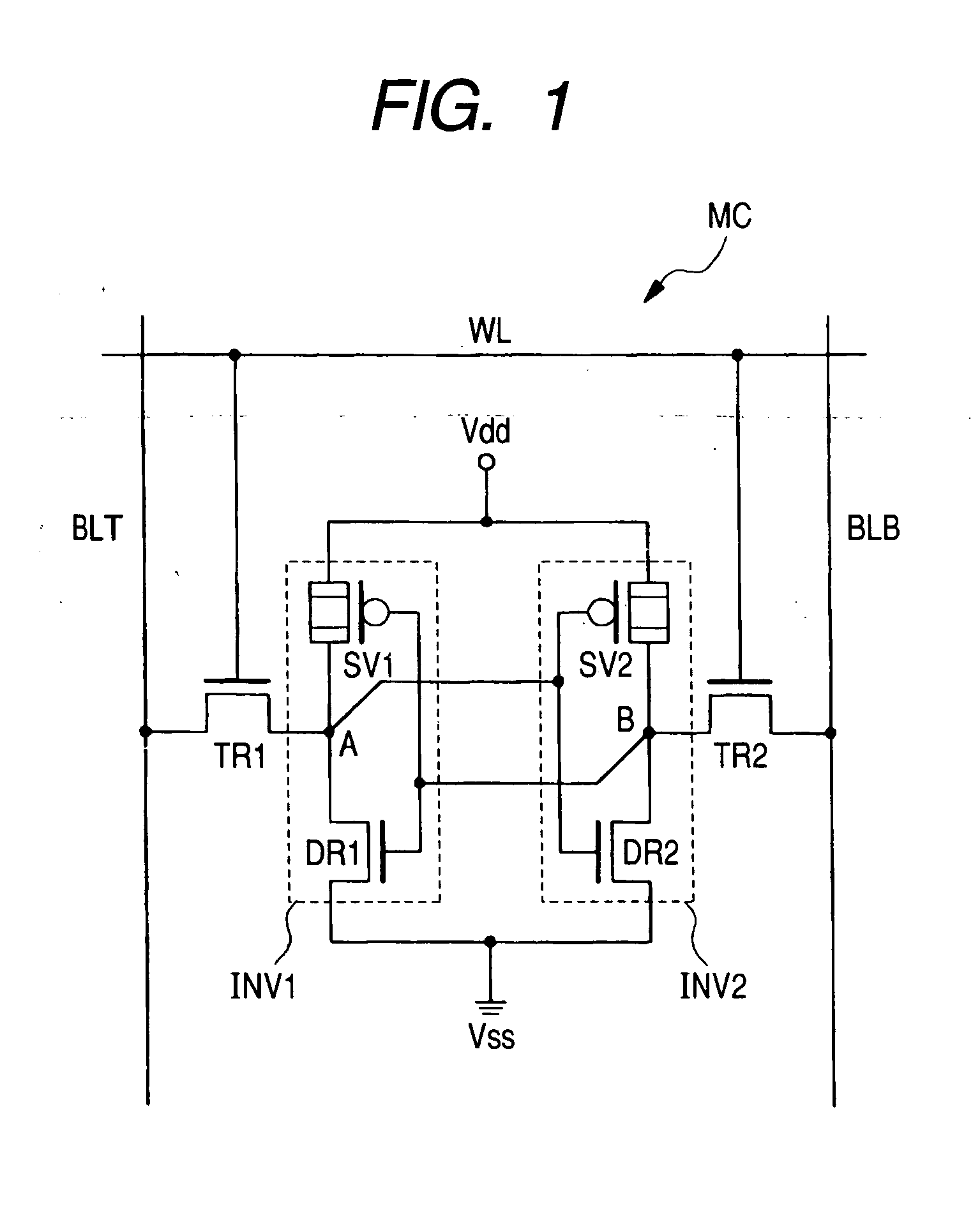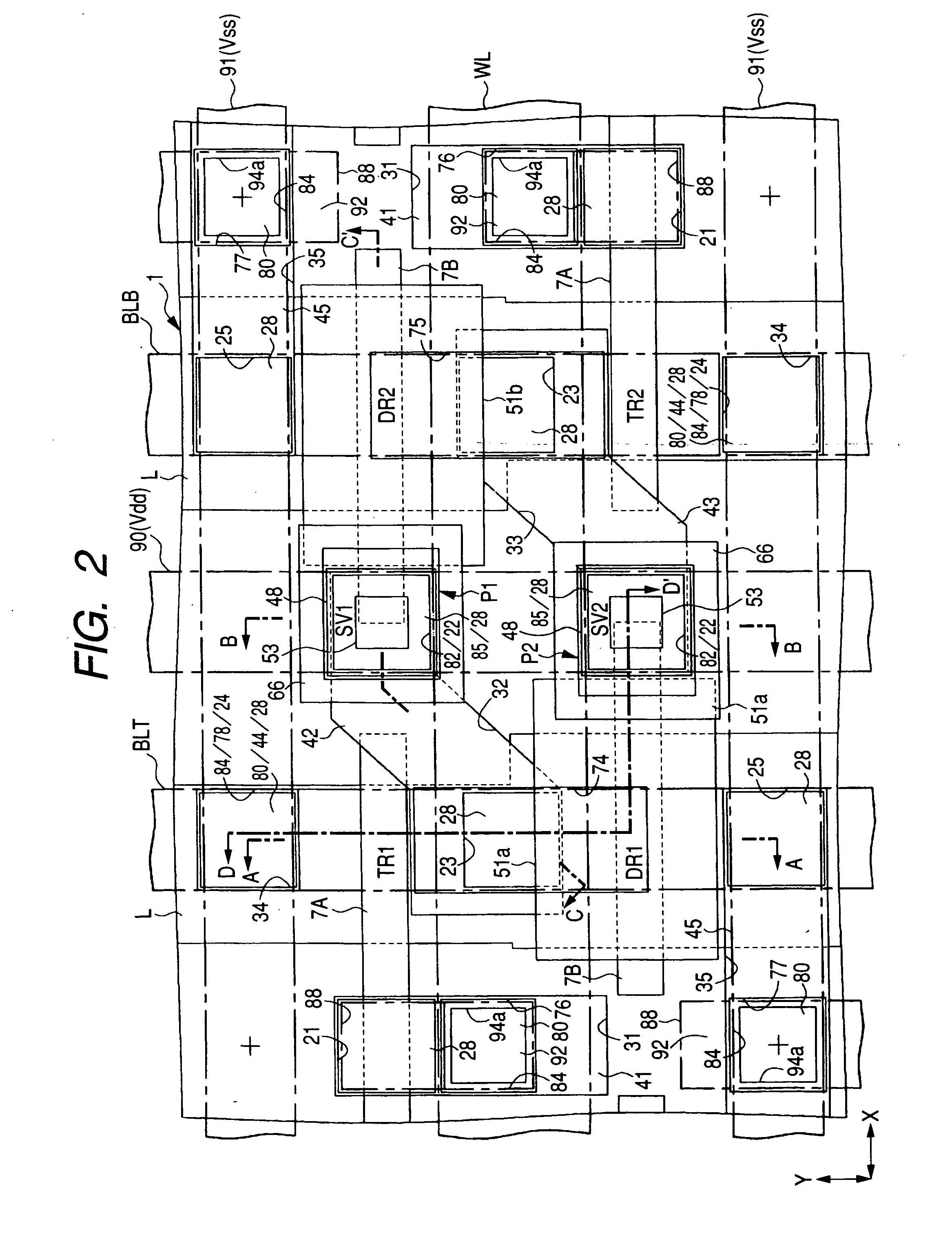Semiconductor device and a method of manufacturing the same
a semiconductor device and semiconductor technology, applied in the field of semiconductor devices, can solve the problems of difficult to reduce the size of memory cells, and achieve the effect of improving the characteristics of semiconductor devices
- Summary
- Abstract
- Description
- Claims
- Application Information
AI Technical Summary
Benefits of technology
Problems solved by technology
Method used
Image
Examples
embodiment 1
(Embodiment 1)
FIG. 1 is an equivalent circuit diagram of a memory cell of a SRAM representing an embodiment according to the present invention. As shown in FIG. 1, a memory cell (MC) of the SRAM has two transfer MISFETs (TR1, TR2), two driving MISFETs (DR1, DR2) and two vertical MISFETs (SV1, SV2) located at the intersection between a pair of complementary data lines (BLT, BLB) and a word line (WL).
Among the six MISFETs constituting the memory cell (MC), each of the two transfer MISFETs (TR1, TR2) and two driving MISFETs (DR1, DR2) has an n-channel type MISFET. Further, each of the two vertical type MISFETs (SV1, SV2) has a p-channel type MISFET. While the vertical MISFETs (SV1, SV2) correspond to the load MISFET in a well-known complete CMOS type SRAM, as opposed to the usual load MISFET, they are constituted each with a vertical structure, as will be described later, and they are located over the region for forming the driving MISFETs (DR1, DR2) and the transfer MISFETs (TR1, TR...
embodiment 2
(Embodiment 2)
In connection with this Embodiment 2, the description will be directed to a case of applying the invention, for example, to a manufacturing method for manufacture of a DRAM with reference to FIG. 1 to FIG. 13. FIG. 11 to FIG. 13 are cross sectional views showing a main portion of a semiconductor wafer during manufacturing steps in this Embodiment 2.
FIG. 11 shows a cross sectional view showing a main portion of a p-type substrate 1 constituting a semiconductor wafer during steps for manufacture of the DRAM. An n-channel type MISFET Qns for memory cell selection is formed in an active region of the substrate 1. The MISFET Qns has a pair of n-type semiconductor regions 101 for source and drain, a gate insulation film 102 and a gate electrode 103. Phosphorus (P) or arsenic (As) is, for example, introduced to an n-type semiconductor region 101 formed in a p-type well PWL. A gate insulation film 102 formed on the main surface of the substrate 1 is formed, for example, of a...
embodiment 7
(Embodiment 7)
In connection with this Embodiment 7, the description will be directed to an example of the countermeasure taken for the problem arising in a case of providing first and second conductor layers on a metal interconnection.
FIG. 30 shows a diagram which illustrates the problem found for the first time by the present inventors. A metal interconnection 152 comprising, for example, tungsten as a main interconnection material is formed inside an interconnection trench 151 formed in an insulation film 150 by CMP or the like. In the process of forming a conductor layer 48 over the metal interconnection 152 as explained for Embodiment 1, it has been found according to the experiment conducted by the present inventors that a second semiconductor layer comprising, for example, tungsten silicide does not grow smoothly without applying treatment to the surface of the metal interconnection 152 (exposed surface, CMP surface), but small clumps 48b1 of tungsten silicide or the like ar...
PUM
| Property | Measurement | Unit |
|---|---|---|
| conduction type | aaaaa | aaaaa |
| size | aaaaa | aaaaa |
| temperature | aaaaa | aaaaa |
Abstract
Description
Claims
Application Information
 Login to View More
Login to View More - R&D
- Intellectual Property
- Life Sciences
- Materials
- Tech Scout
- Unparalleled Data Quality
- Higher Quality Content
- 60% Fewer Hallucinations
Browse by: Latest US Patents, China's latest patents, Technical Efficacy Thesaurus, Application Domain, Technology Topic, Popular Technical Reports.
© 2025 PatSnap. All rights reserved.Legal|Privacy policy|Modern Slavery Act Transparency Statement|Sitemap|About US| Contact US: help@patsnap.com



